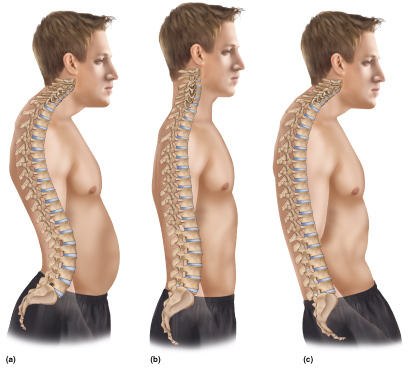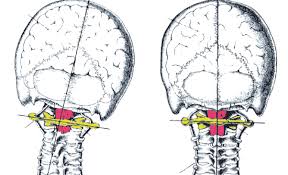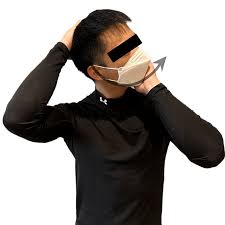

In today’s world of smartphones, long work hours at desks, and binge-watching our favorite shows, maintaining good head posture can feel like an uphill battle.
If you have noticed that your head tends to protrude forward like a turtle peeking out of its shell, you’re not alone.
This common issue, often referred to as “forward head posture,” can lead to neck pain, headaches, and even shoulder problems.
But fear not!
The key to fixing head posture lies in understanding your current postural habits through a postural assessment.
This guide will walk you through how a thorough postural evaluation can pinpoint the root cause of poor head posture and provide targeted solutions to improve it.
Contents of “How to Fix Head Posture with Postural Assessment” Article:
- What is Postural Assessment?
- Understanding Postural Analysis and Its Importance
- Static Postural Assessment vs. Dynamic Postural Assessment
- How Postural Screening Tests Can Identify Imbalances
- The Role of Rapid Upper Limb Assessment
- NASM Postural Assessment Solutions for Head Posture
- Postural Assessment in Physical Therapy
- Fixing Head Posture with Postural Alignment Assessment
- Conclusion: Can Postural Assessment Fix Head Posture?
What is Postural Assessment?
Postural assessment is a comprehensive evaluation of how your body aligns in different positions, both static and dynamic.
It involves analyzing the alignment of your head, shoulders, spine, hips, knees, and ankles to identify any deviations from the ideal posture.
Think of it as a diagnostic tool that helps you understand why you are experiencing discomfort or poor performance in certain movements.
Understanding Postural Analysis and Its Importance
Postural analysis goes beyond just looking at your body in a mirror.
It involves a systematic review of your musculoskeletal alignment to detect imbalances and areas of tension that might be affecting your posture.
Why is this important?
Because poor posture does not just make you look slouchy; it can lead to chronic pain, reduced mobility, tension headaches and even respiratory issues.
By conducting a thorough postural analysis, you can target these imbalances and work towards a healthier, pain-free body.
Static Postural Assessment vs. Dynamic Postural Assessment
When it comes to evaluating posture, there are two main types: static and dynamic postural assessments.
Static Postural Assessment:
This involves examining your body while you’re standing still. The aim is to identify asymmetries and misalignments in your skeletal structure, such as a forward head tilt or uneven shoulders. A static postural assessment can reveal habitual patterns that contribute to poor head posture.
Dynamic Postural Assessment:
This type of assessment looks at how your body moves during activities like walking, bending, or lifting. It helps to identify compensations or dysfunctional movement patterns that may not be visible in a static assessment. For example, if your head juts forward while you’re running, a dynamic assessment can pinpoint the underlying cause, such as weak core muscles or tight hip flexors.
How Postural Screening Tests Can Identify Imbalances
Postural screening tests are specific evaluations used to detect musculoskeletal imbalances.
These tests include simple movements like bending forward, side bending, or rotating the head to assess range of motion and symmetry.
A postural screening test can highlight areas of stiffness or weakness that contribute to poor head posture.
By identifying these issues early, you can target them with specific exercises and stretches to improve your overall posture.
The Role of Rapid Upper Limb Assessment
Rapid Upper Limb Assessment (RULA) is a specialized postural test designed to evaluate the risk factors associated with upper body musculoskeletal disorders.
It is particularly useful for assessing head and neck posture in people who spend long hours at a desk or using electronic devices.
RULA scores different body parts, including the neck, to identify postural risks and recommend ergonomic adjustments.
If your head posture is causing neck pain or tension headaches, a RULA can provide valuable insights into necessary changes to your workstation or daily habits.
NASM Postural Assessment Solutions for Head Posture
The National Academy of Sports Medicine (NASM) offers a structured approach to postural assessment, focusing on identifying and correcting movement dysfunctions.
NASM postural assessment solutions include a series of tests and corrective exercises tailored to address common postural issues like forward head posture.
These solutions are particularly effective because they not only highlight the problem but also offer a step-by-step approach to correcting it through targeted strength and flexibility training.
Postural Assessment in Physical Therapy
In physical therapy, postural assessment plays a crucial role in developing a personalized treatment plan.
A postural assessment physical therapy session typically begins with a thorough evaluation of your posture, both static and dynamic.
This helps the therapist identify the root causes of poor head posture, such as muscular imbalances or joint restrictions.
From there, a combination of manual therapy, corrective exercises, and ergonomic advice is used to restore proper alignment and function.
Fixing Head Posture with Postural Alignment Assessment
Postural alignment assessment involves a detailed analysis of your body’s structural alignment. By comparing your posture to the ideal anatomical position, this assessment can pinpoint the exact areas contributing to poor head posture.
For example, a postural alignment assessment might reveal that your forward head posture is due to tight chest muscles and weak upper back muscles.
Armed with this information, you can focus on stretching the tight muscles and strengthening the weak ones to restore proper head alignment.
Final Take: Can Postural Assessment Fix Head Posture?
So, can postural assessment really fix head posture?
Absolutely!
By providing a detailed map of your body’s alignment and movement patterns, postural assessment allows you to address the root causes of poor head posture.
Whether it is through static postural assessment, dynamic postural assessment, or specialized tests like RULA, identifying the underlying issues is the first step towards correction.
With a targeted approach, including exercises and ergonomic adjustments, you can improve your head posture and say goodbye to pain and discomfort.
References:

